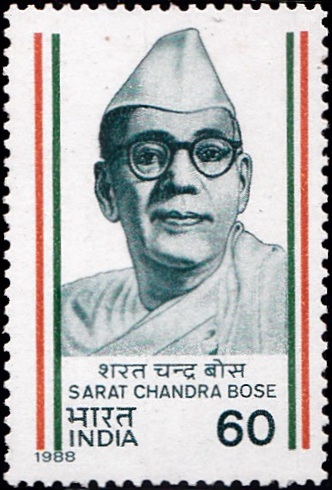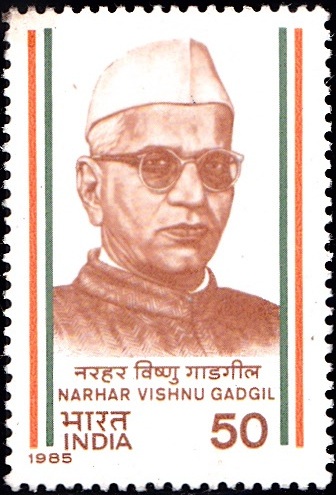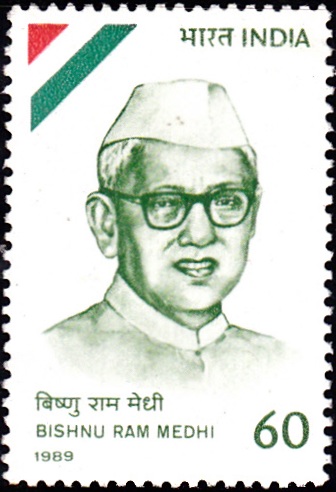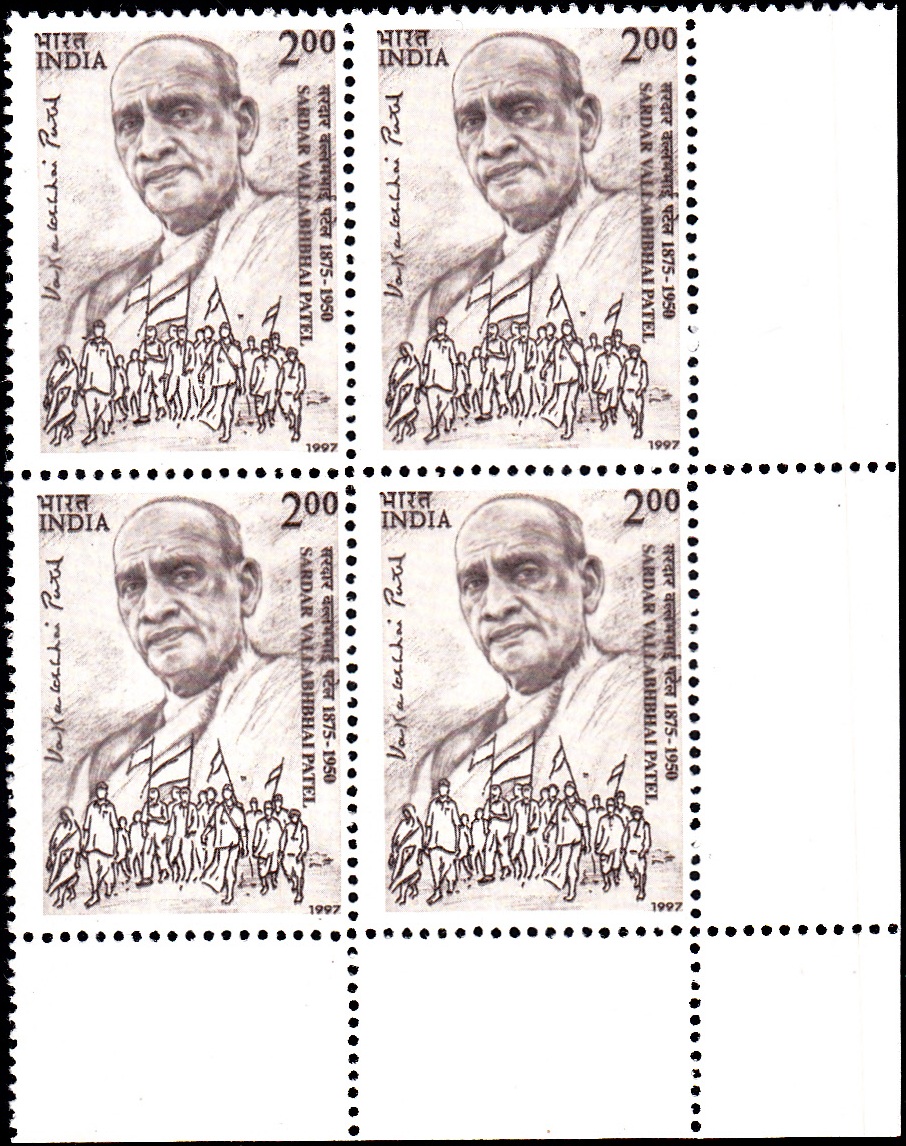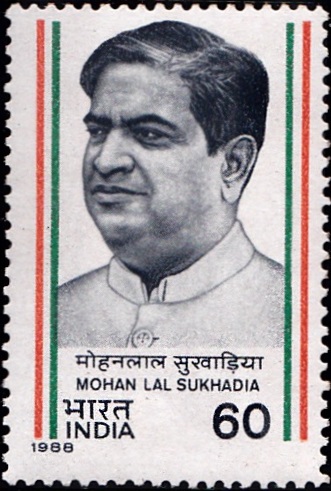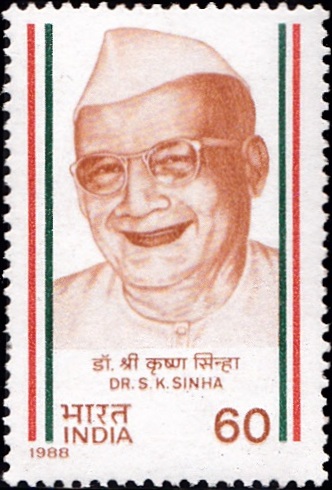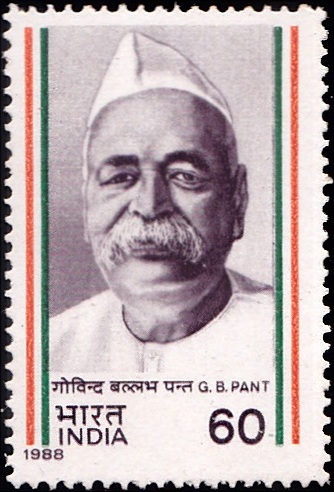
G.B. Pant 1988
A commemorative postage stamp on the Birth Centenary and Death Anniversary of Pandit Govind Ballabh Pant, 1st Chief Minister of Uttar Pradesh (1950-54) :
 Issued by India
Issued by India
Issued on Mar 7, 1988
Description of Designs : The stamp is designed by the India Security Press, Nashik Road. The cancellation is designed by Smt. Alka Sharma.
Type : Stamp, Mint Condition
Colour : Multi colour
Denomination : 60 Paise
Overall size : 4.06 x 2.73 cms.
Printing size : 3.71 x 2.38 cms.
Perforation : 13 x 13
Paper : Indigenous unwatermarked adhesive P G Matt coated stamp paper
Number Printed : 10,00,000
Number per issue sheet : 40
Printing Process : Photogravure
Printed : India Security Press
Name : Govind Ballabh Pant
Born on Sep 10, 1887 at Khoont, Almora, United Provinces, British India [now in Uttarakhand, India]
Died on Mar 7, 1961 at New Delhi, India
About :
- Pandit Govind Ballabh Pant, the son of Pandit Manorath Pant, was born on 10th September, 1887 at Khoont in Almora district, Uttar Pradesh. He graduated from Allahabad University, developing there a lasting nationalistic fervour.
- He became a successful lawyer and, gradually, an eminent public figure of Kumaon. Instrumental in the founding of Prem Sabha and Kumaon Parishad, he represented Kumaon at the Congress Session in 1916.
- Pandit Motilal Nehru nominated him the leader of the Swaraj Party in the U.P. Legislative Council in 1923. He actively participated in the anti-Simon Commission agitation and in the Civil Disobedience Movement, facing injury and imprisonment.
- As Chairman of the U.P. Agrarian Committee he submitted a report on agrarian distress in the State. He was an active member of the Congress Working Committee and the Congress Parliamentary Board.
- Elected to the Central Legislative Assembly in 1934, he proved an accomplished parliamentarian. As Premier of the then United Provinces from 1937 to 1939 he piloted the U.P. Tenancy Act and secured the release of the prisoners involved in the Kakori Case. His Government however resigned in 1939 on the issue of India‘s participation in the War.
- Pandit Pant was imprisoned for a year under Individual Satyagraha in 1940 and again for almost three years during the Quit India Movement in 1942. He actively participated in the negotiations on the grant of Indian Independence, attending the Simla Conference in 1945. He contributed to the framing of the Constitution as a member of the Constituent Assembly of India, its committees and sub committees. At the AICC meeting on 14th June 1947, he moved the historic resolution, seconded by Nehru and Patel, that led to the passing of the Indian Independence Act by the British Parliament, partitioning the country.
- During the Chief Ministership (1946-54), Uttar Pradesh made substantial progress, notable achievements being the abolition of zamindari, launching of agricultural development schemes, reorganisation of the educational system and improvement of the administrative machinery. He was the leader of the Rajya Sabha and the Union Home Minister from 1955 till his death on 7th March 1961. His services to the nation were recognised in 1957 with the Bharat Ratna, the country’s highest award.


